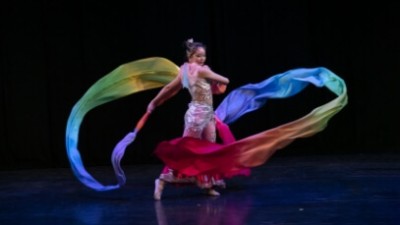Imaging Science Thesis Defense: Macroscopic Roughness Modeling of Satellite Multi-Layer Insulation Reflectance

Imaging Science MS Defense
Macroscopic Roughness Modeling of Satellite Multi-Layer Insulation Reflectance
Kevin Donnelly
Imaging Science MS Candidate
Rochester Institute of Technology
Register for Zoom here
Abstract:
Reflectance modeling of specular surfaces with irregular geometries remains difficult to solve for an array of applications. In the growing space industry, there are many spacecraft materials with high specularity and varying levels of roughness. Modeling these materials in simulations becomes difficult as any realistic amount of roughness is added, necessitating more accurate physical models to represent how light is interacting with these surfaces. While some work has been done to attempt to characterize the spectral signatures of the materials themselves using hyperspectral imaging systems, the scope of these efforts has been fairly limited and not representative of the conditions of on orbit spacecraft geometries. Many models that attempt to characterize reflectance from roughness do not account for the effects of multiple-scattering of light due to the surface geometry, and the few that do only provide empirical solutions to the problem for specific scenarios\materials. There are two prevailing approaches focusing on opposite ends of reflectance types: Rayleigh-based and Fresnel-based. While each approach includes some representation of multiple scattering, it is likely that the solution for this problem falls somewhere between these approaches. Using spacecraft Multi-Layer Insulation (MLI) materials with varying levels of roughness applied to each, the Bidirectional reflectance distribution function (BRDF) of each material in each roughness state was collected at multiple illumination angles in order to gather enough data to fit a recently developed model from the literature and to analyze the effects of incorporating components of both Rayleigh- and Fresnel-like reflectance. Through a discussion of the effectiveness of the model’s components accounting for single and multiple scattering, as well as the nature of the materials themselves in roughened conditions, a path forward for modeling such roughened specular materials is identified for the future capability of accurately modeling and simulating such scenarios.
Intended Audience:
All are Welcome!
To request an interpreter, please visit myaccess.rit.edu
Event Snapshot
When and Where
Who
This is an RIT Only Event
Interpreter Requested?
No







